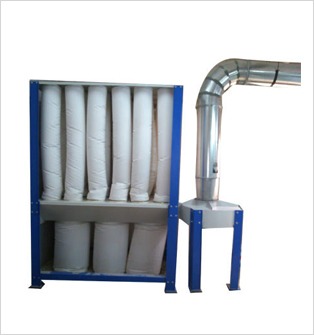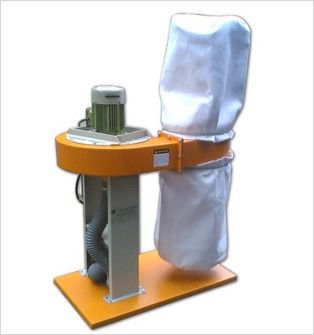- Home Page
- Company Profile
-
Our Products
- Dust Collector
- Compact Dust Collector
- Dust Collection System
- Portable Dust Collection Unit
- Multiple Bag Dust Collector
- Cartridge Dust Collector
- Panel Saw Dust Collector
- Portable Dust Collector
- Dust Collecting Equipment
- Woodworking Dust Collector
- Sanding Dust Collector
- Vertical Bag Dust Collector
- Dust Control Equipment
- Single Phase Vertical Bag Dust Collector
- Air Blower
- Fume Extractor
- Solder Fume Extractor
- Portable Fume Extractor
- Portable Fume Extraction Unit
- Laser Fume Extractor
- Soldering Fume Extractor
- Portable Fume Extractor With Flexible Hose
- Portable Welding Fume Extractor With Suction Arm
- Smoke Extractor
- Welding Fume Extractor
- Mobile Fume Extractor
- Portable Welding Fume Extractor
- Portable Fume Extractor Unit
- Industrial Fume Extractor
- Centrifugal Fan
- Single Inlet Centrifugal Fan
- Inline Centrifugal Fans
- PP Centrifugal Fan
- Centrifugal Duct Fan
- Centrifugal Air Fan
- Centrifugal Belt Drive Fan
- Cabinet Centrifugal Fan
- Portable Centrifugal Fan
- Direct Drive Centrifugal Fan
- Electric Centrifugal Fan
- High Speed Centrifugal Fan
- DIDW Centrifugal Fan
- Belt Driven Centrifugal Fan
- High Pressure Centrifugal Fan
- Direct Drive Centrifugal Fans
- Axial Flow Fan
- Blower Fan
- Cooling Fans
- Man Coolers
- Exhaust Fan
- Centrifugal Blowers
- Curved Impeller
- Industrial Blowers
- Axial Fans
- Ventilation Fan
- Inline Cabinet Fan
- Bifurcated Fans
- Duct Fans
- Cabinet Inline Fan
- Degasser Blower
- Turbo Blowers
- Blower Wheel
- Air Pollution Control Device
- Smoke Filtration System
- Induced Draft Fan
- Suction Blower
- Dust Collector
- More Info.
- Contact Us
Sanding Dust Collector
60000 INR/Unit
Product Details:
- Efficiency 99%
- Usage & Applications Industrial
- Material Mild Steel
- Voltage 230 Volt (v)
- Warranty 1 Year
- Click to View more
X
Sanding Dust Collector Price And Quantity
- 60000 INR/Unit
- 1 , , Number
Sanding Dust Collector Product Specifications
- 99%
- Mild Steel
- 1 Year
- Industrial
- 230 Volt (v)
Sanding Dust Collector Trade Information
- 15 , , Number Per Day
- 2-3 Days
Product Description
Our organization has gained recognition as an affluent manufacturer and supplier of Sanding Dust Collector. In manufacturing process of the product, we utilize the finest quality components at our premises. We assure our clients that it is quality tested on predefined parameters. This product is widely demanded in cement and pharmaceutical industry. We offer our product at 99% efficiency level. Equipped with centrifugal blower, filler bag and cabinet blower, this dust collector can capture 0.5 micron small dust particles. Premium grade metals like steel, brass, aluminium and iron have been used for its fabrication. Solid structure, long working life and high efficiency level are some of its key features. Clients can avail the product from us at an affordable price. Sanding Dust Collector Features: Rugged construction High performance Easy installation Sand Dust Collector Applications: Woodworking Industry: Sanding wood generates significant amounts of fine dust particles that can be hazardous to health and can also pose a fire risk. Sand dust collectors are commonly used in woodworking shops to capture and remove dust produced during sanding operations on wood surfaces, including furniture manufacturing, cabinetry making, and carpentry. Metalworking Industry: Sanding, grinding, and polishing metal surfaces produce metal dust and particles that can be harmful if inhaled and can also contaminate the surrounding environment. Dust collectors are utilized in metal fabrication shops, automotive manufacturing plants, and metalworking facilities to effectively capture metal dust generated during surface preparation and finishing processes. Construction Industry: Sanding operations are commonly performed in construction activities such as drywall finishing, plastering, and surface preparation for painting. Dust collectors are employed on construction sites to control airborne dust and maintain a clean working environment, reducing the risk of respiratory problems for workers and minimizing cleanup efforts. Automotive Refinishing: Sanding and refinishing automotive surfaces generate fine dust particles from paints, primers, and fillers, which can be harmful if inhaled and can also affect the quality of paint finishes. Dust collection systems are essential in auto body shops and automotive refinishing facilities to capture overspray and sanding dust, ensuring a clean and safe working environment and achieving high-quality paint finishes. Aerospace Industry: Surface preparation and finishing processes are critical in aerospace manufacturing for producing smooth and polished surfaces on aircraft components. Sanding dust collectors are utilized in aerospace facilities to capture dust and debris generated during sanding and polishing operations, maintaining clean air quality and ensuring adherence to stringent safety and quality standards. Shipbuilding and Marine Industry: Sanding and surface preparation are integral parts of shipbuilding and marine manufacturing processes for achieving smooth and corrosion-resistant surfaces on ship hulls and marine structures. Dust collectors are employed in shipyards and marine fabrication facilities to control dust emissions and maintain a safe and healthy working environment for workers. Sand Dust Collector FAQ: Q. What is a sand dust collector?Ans: A sand dust collector is a type of industrial filtration system designed to capture and remove dust particles generated during sanding operations. It helps maintain clean air quality in workplaces and ensures worker safety.Q. How does a sand dust collector work?Ans: Sand dust collectors work by using a combination of filters, such as fabric bags, cartridges, or cyclones, to capture dust particles suspended in the air. The collected dust is then either disposed of or recycled, while clean air is released back into the environment.Q. What are the benefits of using a sand dust collector?Ans: Some benefits of using a sand dust collector include: a. Improved air quality: By capturing dust particles, it helps reduce airborne pollutants, promoting a healthier work environment. b. Compliance with regulations: Many industries have regulations regarding air quality and dust emissions. Using a dust collector helps comply with these regulations. c. Worker safety: Minimizing exposure to airborne dust particles reduces the risk of respiratory problems and other health issues among workers. d. Equipment protection: Dust collectors can also help protect machinery and equipment from dust buildup, extending their lifespan and reducing maintenance costs.Q. Where are sand dust collectors commonly used?Ans: Sand dust collectors are used in various industries where sanding processes are performed, including woodworking, metalworking, construction, automotive refinishing, aerospace manufacturing, shipbuilding, and others.Q. What factors should be considered when selecting a sand dust collector?Ans: When selecting a sand dust collector, consider factors such as the size of the workspace, the type and volume of dust generated, the level of filtration required, energy efficiency, maintenance requirements, and compliance with regulatory standards.Q. How do I maintain a sand dust collector?Ans: Regular maintenance is essential to ensure the optimal performance of a dust collector. This may include inspecting and cleaning filters, replacing worn-out parts, checking for leaks or damage, and following the manufacturers recommended maintenance schedule.Q. Can a sand dust collector be customized for specific needs?Ans: Yes, many dust collector manufacturers offer customizable options to meet specific application requirements. This may include selecting different types of filters, adding features such as explosion protection or noise reduction, or designing systems for unique space constraints.Q. Are there different types of sand dust collectors available?Ans: Yes, there are several types of dust collectors, including baghouse collectors, cartridge collectors, cyclone separators, electrostatic precipitators, and wet scrubbers. The choice of collector depends on factors such as the type of dust, airflow volume, space limitations, and filtration efficiency required.Q. What are the safety considerations when using a sand dust collector?Ans: Safety considerations when using a dust collector include proper installation and grounding to prevent static electricity buildup, regular maintenance to ensure equipment reliability, and following safety protocols for handling collected dust, such as proper disposal procedures for hazardous materials.FAQs of Sanding Dust Collector:
Q: What is the operating voltage of the Sanding Dust Collector?
A: The Sanding Dust Collector operates at 230 Volts (v).Q: What material is used for the construction of the Sanding Dust Collector?
A: The Sanding Dust Collector is made of Mild Steel.Q: What is the warranty period for the Sanding Dust Collector?
A: The Sanding Dust Collector comes with a warranty of 1 year.Q: What is the efficiency rating of the Sanding Dust Collector?
A: The Sanding Dust Collector has an efficiency rating of 99%.Q: What are the usage and applications of the Sanding Dust Collector?
A: The Sanding Dust Collector is designed for industrial usage and applications.Tell us about your requirement

Price:
Quantity
Select Unit
- 50
- 100
- 200
- 250
- 500
- 1000+
Additional detail
Mobile number
Email







 Send Inquiry
Send Inquiry Send SMS
Send SMS
